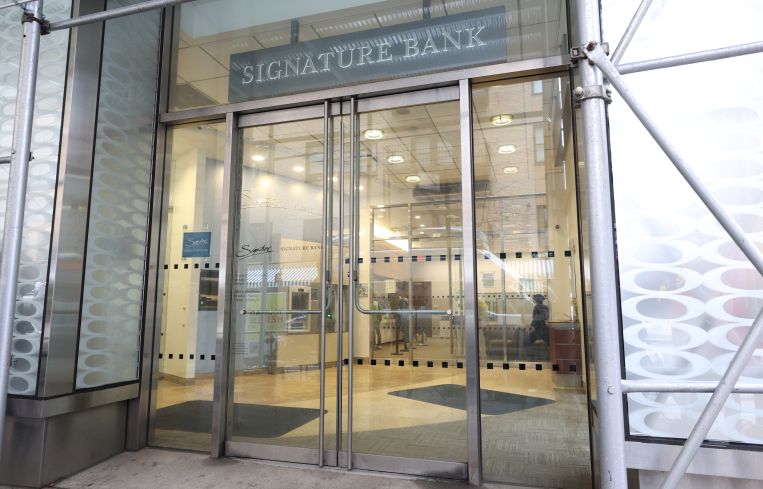Shedding of Signature Bank Loan Portfolio Commences
By Andrew Coen September 5, 2023 4:39 pm
reprints
The Federal Deposit Insurance Corporation (FDIC) has kicked off the unloading of Signature Bank’s roughly $60 billion commercial real estate loan portfolio.
The FDIC announced Tuesday the start of a marketing process for approximately $33 billion of loans originated by Signature prior to the bank’s collapse in March — one of the biggest dominoes to fall in a wider regional banking crisis.
Newmark was retained by the FDIC in late March to sell off the Signature debt in seven pools, a process the FDIC said will take place over the next three months.
The majority of the $33 billion CRE loan portfolio consists primarily of New York City multifamily properties. Roughly $15 billion of these loans are tied to rent-stabilized or rent-controlled assets, according to the FDIC announcement.
Newmark declined to comment.
The loan portfolio sale has been highly anticipated, with transaction activity largely stalled and price discovery hard to come by of late.
Eric Roth, a senior director in the capital markets group at Cushman & Wakefield, said the biggest challenge for prospective buyers of the Signature loans at the start of the marketing process will be unknowns about certain financial information, such as possible concessions and how many tenants remain in place. Roth, who works with many borrower clients with ties to Signature loans, said the loan acquisition prices will be driven largely by fundamentals in New York City’s multifamily market, rather than the individual assets.
The size of the loan portfolio and the time frame in which the debt needs to be sold will likely limit suitors of the Signature loans to large institutionalized groups, according to Roth. He expects that the unwinding of the Signature debt — months after the regional banking crisis unfolded — will give the New York City CRE market a shot in the arm and spur more transactional volume.
“It will create liquidity and kick the market into gear,” Roth said. “A lot of banks are waiting to see how these loans get valued.”
Andrew Coen can be reached at acoen@commercialobserver.com


